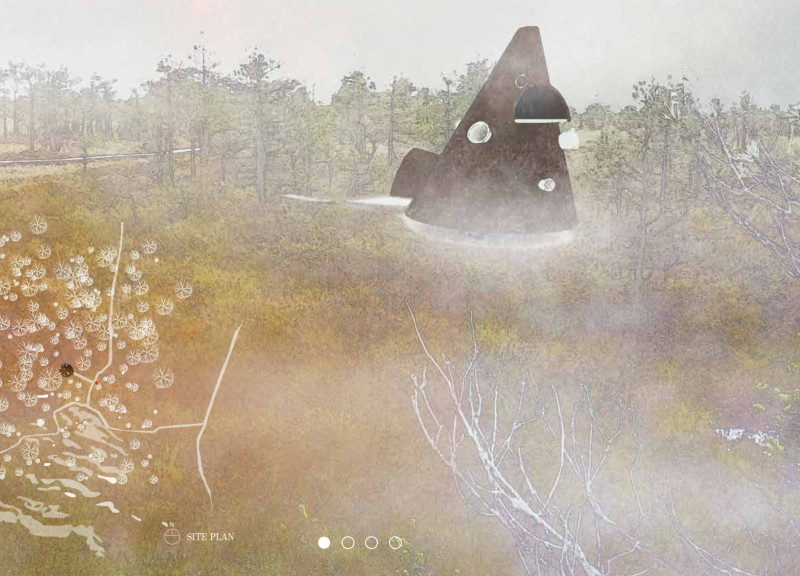5 key facts about this project
Functionally, the observation tower facilitates extensive views of the park's unique ecosystems, allowing visitors to observe local wildlife and the diverse plant life that characterizes this area. The design encourages exploration and interaction, integrating pathways that accommodate individuals with varying abilities. By focusing on accessibility, the tower ensures that all visitors can enjoy the natural beauty surrounding them, making it a space for education and enjoyment for everyone.
The architectural design features a distinctive conical shape, which is both aesthetically pleasing and functional. This form reduces the visual impact on the landscape while fostering a sense of harmony with the environment. The design is complemented by the use of sustainable materials that resonate with the park's ecological ethos. Primary materials include wood, which offers an organic quality and warmth, glass that provides clear sightlines to the horizon, and metal that delivers durability for structural elements.
One of the unique aspects of this architectural project is its approach to enhancing the sensory experience of visitors. The ground level boasts interactive features that encourage tactile exploration, while the elevated viewing platforms provide opportunities for visual and auditory engagement with the environment. For example, specialized design elements amplify the natural sounds of the landscape, creating a dynamic auditory experience that complements the visual beauty of the scenery.
Furthermore, the incorporation of sensory plants around the base of the tower enriches the overall experience by inviting visitors to engage with their sense of smell. Elements that celebrate local culinary traditions ensure that taste is included, making the experience multi-layered and immersive. Such thoughtful consideration of the human sensory experience reflects a progressive trend in contemporary architectural design, where the focus extends beyond the confines of the building to include the surrounding environment.
The architectural design reflects an understanding of the cultural heritage of the region, as it draws inspiration from traditional thatched-roof structures. This connection to the local context not only respects history but also enhances the authenticity of the visitor's experience. The design ensures that the tower serves as a natural extension of the landscape, further encouraging a perception of unity between the building and the park itself.
As a result, the Kemeri National Park Observation Tower stands as a testament to the possibilities of architecture when it actively engages with its environment. The careful consideration of materiality, form, and sensory interaction makes this project a relevant case study in modern architectural design. Visitors are invited to explore the project presentation further to gain a deeper understanding of the intricate architectural plans, sections, and design ideas that contributed to this unique structure.


























